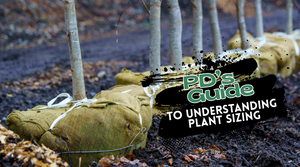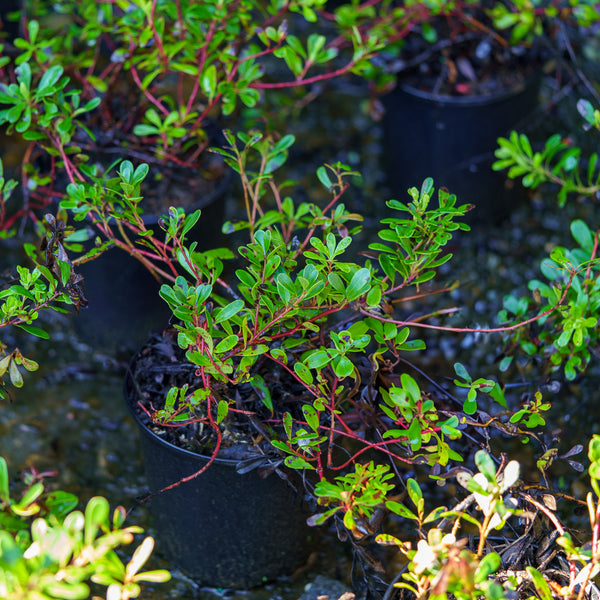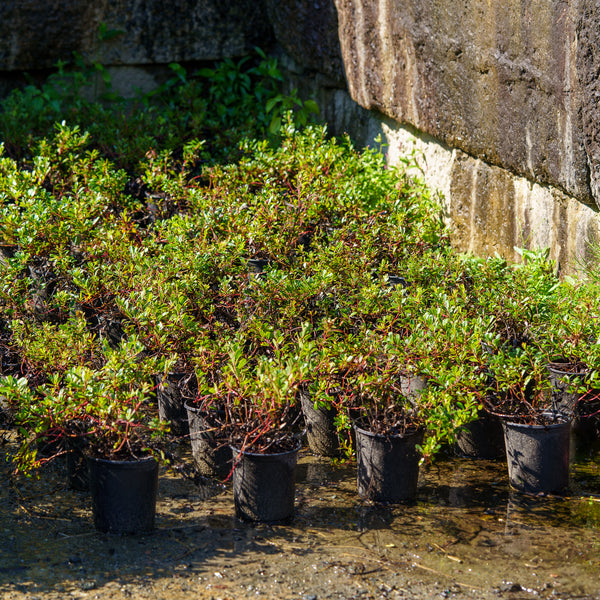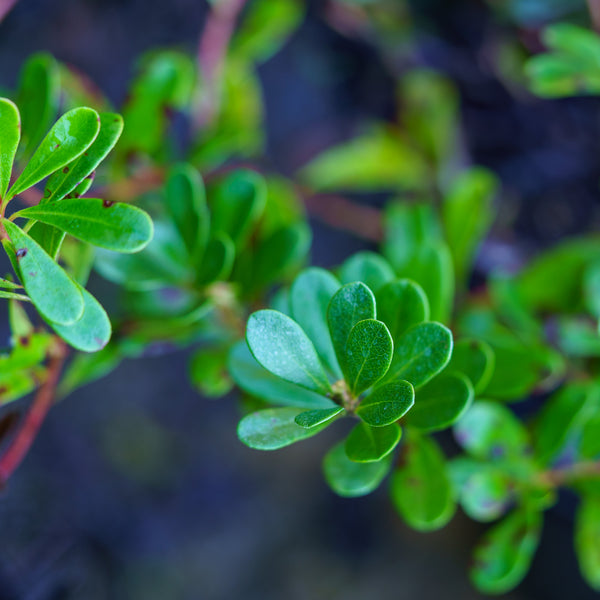Bearberry
Bearberry (Arctostaphylos uva-ursi)
Bearberry (Arctostaphylos uva-ursi) is a cold-hardy, evergreen groundcover native to northern North America, Europe, and Asia. Known for its trailing form, leathery foliage, and ecological value, Bearberry is ideal for stabilizing slopes, covering dry, rocky soil, and providing wildlife habitat. It offers four-season beauty, with glossy green leaves that turn bronze or reddish in winter, pale pink flowers in spring, and bright red berries that persist into the cold months.
Distinctive Features
This low-growing species typically reaches 6 to 12 inches in height and spreads 3 to 6 feet wide, forming a dense mat of tough, glossy foliage. The leaves are small, rounded, and evergreen, remaining attractive year-round. In spring, Bearberry produces clusters of small, urn-shaped pink to white flowers that are followed by red berries in late summer. These berries are a favorite food source for birds and mammals, making Bearberry especially valuable in wildlife gardens and naturalized settings.
Growing Conditions
- Sun Exposure: Full sun to light shade; best foliage color and flowering in full sun.
- Soil: Prefers acidic, sandy, or rocky soils; intolerant of clay or poorly drained conditions.
- Water: Low; drought tolerant once established, with minimal supplemental water needed.
- Humidity: Best in dry climates or sites with excellent air circulation.
- USDA Hardiness Zones: 2�6; exceptionally hardy and well-suited to northern regions.
Ideal Uses
- Focal Point Groundcover: Dense evergreen foliage adds year-round structure and beauty to open areas.
- Native Plantings: A staple in Northern native landscapes and ecological restorations.
- Erosion Control: Strong root system stabilizes slopes, embankments, and sandy soils.
- Rock Gardens: Well-suited to dry, rocky terrain with excellent drainage.
- Wildlife Habitat: Provides nectar for pollinators and berries for birds and small mammals.
Low Maintenance Care
Bearberry is among the most durable and low-maintenance native groundcovers. Once established, it requires little care and performs reliably in difficult conditions.
- Watering: Deep water during establishment; drought tolerant thereafter.
- Pruning: Rarely needed; can be lightly trimmed after flowering to control spread or rejuvenate foliage.
- Fertilizing: Not recommended; thrives in nutrient-poor, acidic soils without supplementation.
- Pest and Disease Resistance: Highly resistant to pests; susceptible to root rot in poorly drained soil.
- Winter Care: Fully hardy; evergreen foliage may bronze in cold winters and rebounds in spring.
Why Choose Bearberry?
Bearberry (Arctostaphylos uva-ursi) offers a reliable, low-growing evergreen option for tough sites. With its native adaptability, ecological benefits, and visual appeal, it�s an ideal choice for sustainable landscaping in cold and dry regions.
- Evergreen Groundcover: Year-round coverage in harsh environments with attractive foliage and form.
- Wildlife Friendly: Supports pollinators and provides berries for birds and mammals.
- Cold Climate Toughness: Survives frigid winters and thrives where other plants struggle.
- Drought Resilient: Naturally adapted to dry soils with minimal maintenance needs.
- Ideal for Slopes and Poor Soils: Provides erosion control and beauty in challenging conditions.
For a native, cold-hardy evergreen that thrives in poor soil and delivers four-season interest, Bearberry is a time-tested favorite for naturalized and ecological landscapes.

OUR SIZING
Not sure what 2 inch B&B or 30 Gallon Clump really means? This guide breaks down all our plant size terms so you know exactly what to expect, whether you're ordering online or picking up at our nursery. From caliper measurements to container volumes, we've decoded our system to help you shop with confidence.

Plant Detectives Shipping Guide
Nationwide plant shipping made easy. Learn how we ship trees, shrubs, annuals and perennials. No order too big or too small. Fast, careful, and contractor-friendly.



